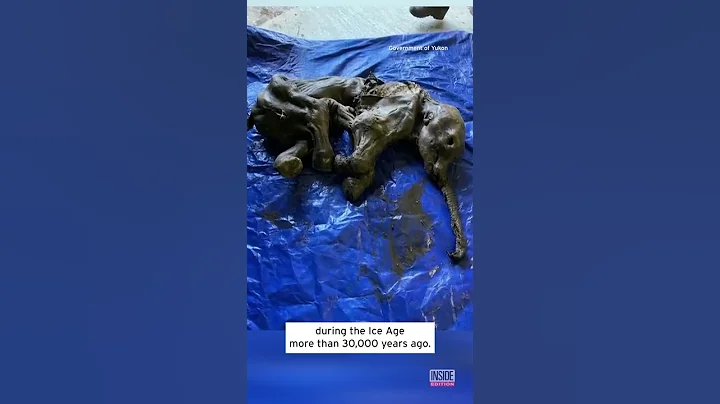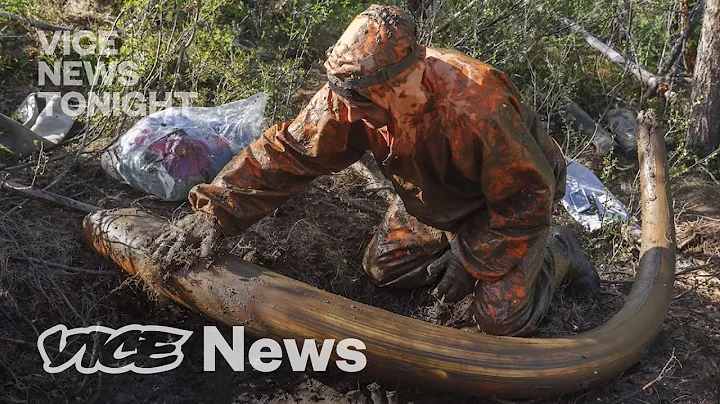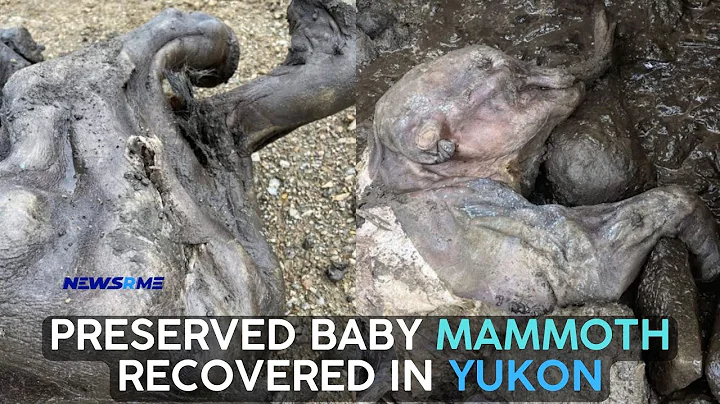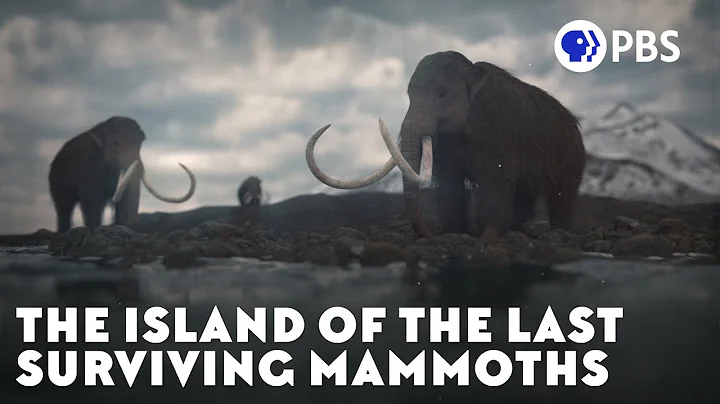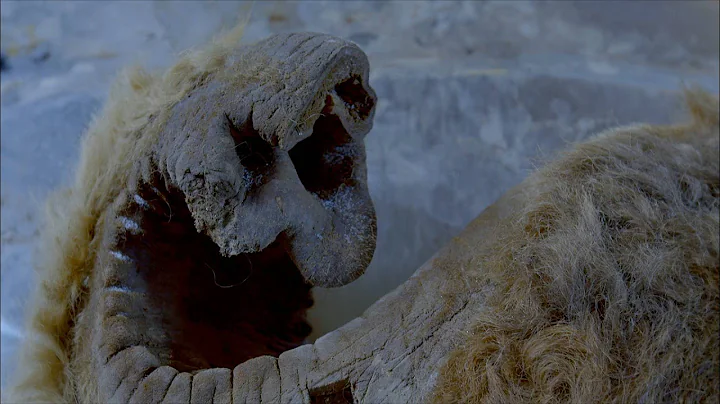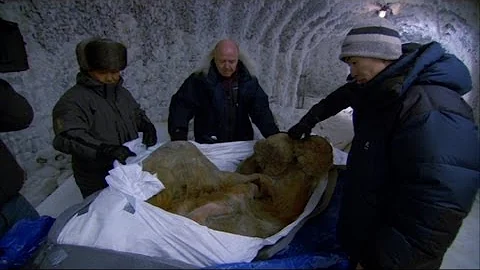The carcass of a mammoth recently discovered in a gold mine in Yukon, Canada, has attracted a lot of attention because it is really special.
The large herbivorous mammoth during the Ice Age was thought to have become extinct 4,000 years ago. However, because it lived in a special period of extreme cold and freezing, many carcasses have been preserved in the permafrost until now. In the Siberian permafrost of the Russian Arctic Circle, a huge number of mammoth carcasses are frozen. The locals once made a living by digging up mammoths. Mammoth tusks are very popular in many places.

It is not uncommon for mammoths to be unearthed. Why is this time so special? Mainly because "it" is so well preserved.
The ten thousand-year-old mammoth remains intact, and its fingernail skin is clearly visible
Some miners suddenly discovered it while looking for gold in the permafrost. These people come from an aboriginal group that has lived along the Yukon River for thousands of years. They are called Trendekhweqin. The elders of the tribe named the mammoth Nun cho ga, which means "big baby." animal". Yes, this is a young mammoth. What’s special about it is that it is so completely preserved. Although it has been dead for 30,000 years, its toenails, skin, hair, trunk and intestines are all complete and clear, as if it were alive. It feels like I just died these days.

Paleontologist Grant Zazula said excitedly: "This is the most exciting scientific project I have ever been involved in, bar none."
As a paleontologist who studies the Ice Age, mammoths are undoubtedly a core topic. . However, due to the long history, what we can see today, thousands of years later, are often only some relatively hard teeth or bones, and the rest of the parts have basically decayed.
In the history of ancient civilizations, embalming and preserving corpses is a practice all over the world, such as ancient Egyptian mummies or ancient Chinese tombs. Usually the ancients would use methods such as dehydration embalming or mercury embalming to preserve the body as long as possible. However, when we unearth it thousands of years later, there are still almost only some residues left.

So when such a complete and perfect mammoth carcass was unearthed, a question came to many people's minds, can we use it to clone a mammoth?
How difficult is it to clone a mammoth
In fact, many countries are already doing this.
The British " Daily Mail " reported in 2008 that Russia wanted to take advantage of local advantages to clone mammoths within ten years and build a mammoth theme park, similar to Jurassic Park.
Russia does have a natural advantage in doing this kind of thing. As mentioned earlier, there are many mammoths preserved in the permafrost in Siberia. From time to time, some well-preserved individuals will be dug out, and the more complete the preservation, the better. This means that the possibility of successfully extracting DNA for cloning is greater.

But it has been 4 years since this happened, and there has been no breakthrough progress, because although there are mature cases of cloning technology and , cloning ancient creatures is really difficult.
The cloned sheep "Dolly" I once learned from a textbook was to extract a cell from each of two ewes, A and B, and then isolate the cell nucleus , and then inject the A sheep cell nucleus into the B sheep's enucleated egg cell. After processing, the recombinant sheep B cells are cultivated into embryonic cells, and then put into the body of sheep C for incubation, and a sheep exactly like A can be born.

The first problem we encountered in this process was to obtain complete mammoth cells and genetic material, that is, DNA. Although we have mammoth fossils, the DNA will continue to degrade over time. oxygen and sunlight and water will cause them to be severely damaged and cannot be cloned.
At present, the special environment of permafrost has just provided good protection for DNA, allowing them to be preserved for nearly ten thousand years. This allows our scientists to see the hope of successful cloning, but this is only the beginning, and there will be more to come. There are many problems to be solved.

When we finally discovered the well-preserved mammoth and finally extracted the DNA fragment from ten thousand years ago, a new problem came again. We had no way to guarantee that it was "clean". It may be affected by fungi, Contamination by foreign DNA from bacteria, plants, animals, etc., and because the mammoth is extinct, we cannot have reference data, so we cannot be sure that the DNA we get is normal, clean and pollution-free, even during the research process It may also cause new pollution and cannot be verified against correct data.

Finally, there is a very important problem, which is the inability to find a suitable "surrogate mother", that is, the C sheep who gave birth to Dolly.
Researchers couldn't find a living mammoth to serve as the "C sheep", so they could only start with the mammoth's close relatives. Research shows that the Asian elephant is more closely related to the mammoth, but this is only Relatively speaking, the size of Asian elephants and mammoths is very different. Even if mammoth embryos are cultivated, there is still a long way to go before they can be successfully transplanted into Asian elephants and complete the final delivery.

Recently, a biotechnology company in the United States raised US$60 million, and its main research is to resurrect the mammoth. The ethics of cloning technology have always been very controversial. We will also encounter many new problems when cloning ancient creatures. For example, the food that mammoths used to eat has disappeared long ago, and now it appears again. What do they eat and how long can they live? The cost of resurrecting one extinct creature is enough to save eight existing endangered species. Is this really worth it? Throughout history, humans have always polluted first, then treated, and destroyed first and then saved.
hopes that scientists will maintain communication with the public during the research process, make some parameters and goals as transparent as possible, and think twice before acting.
